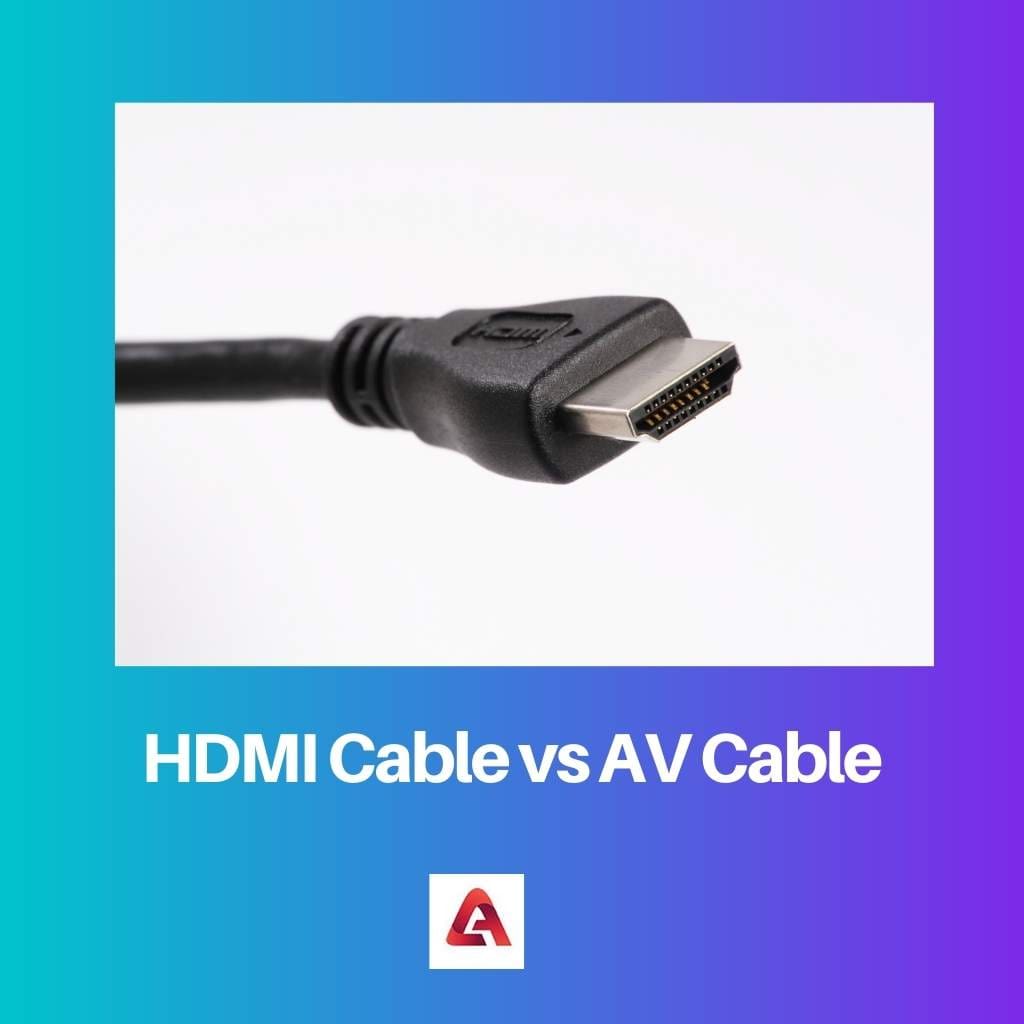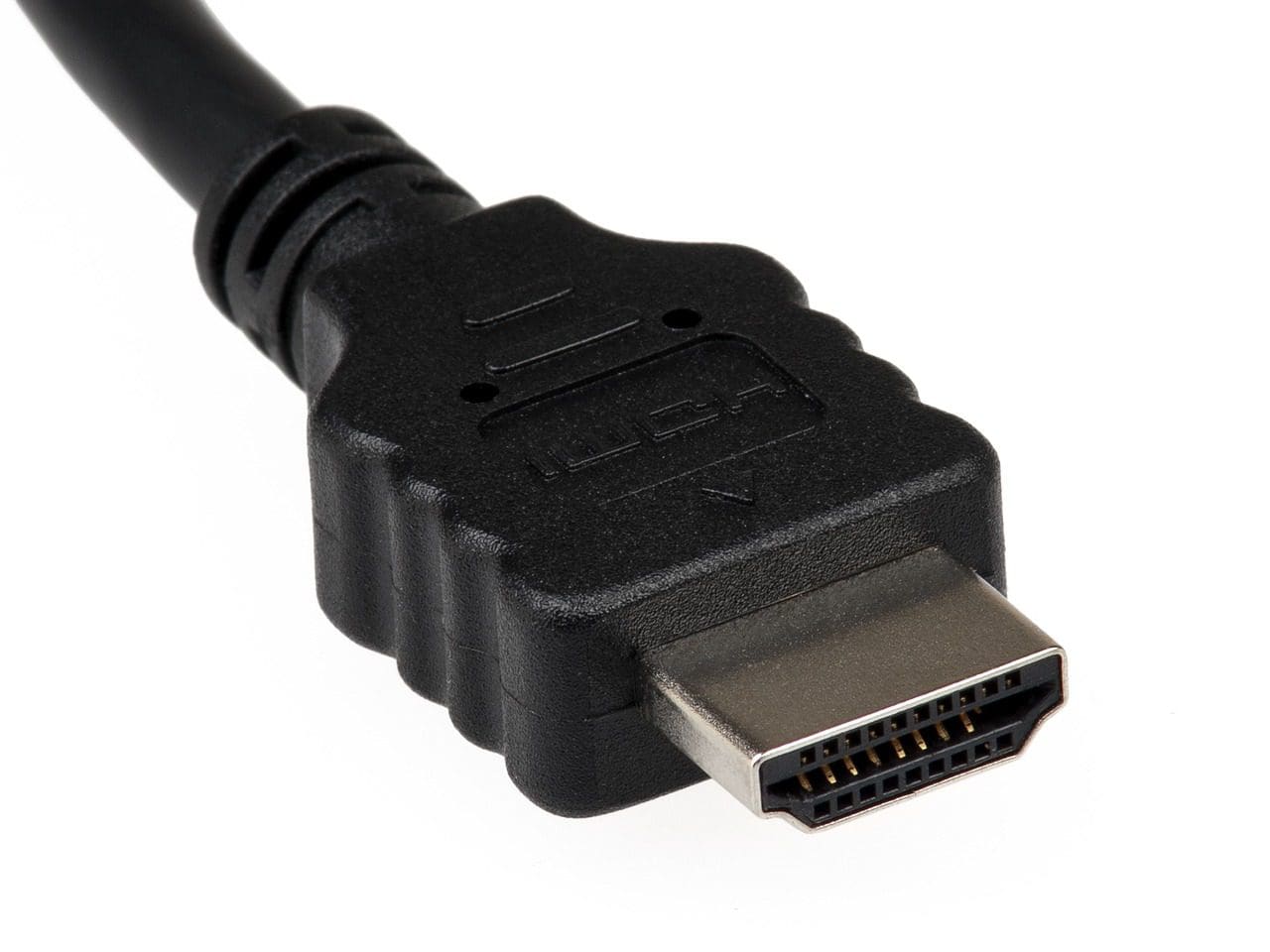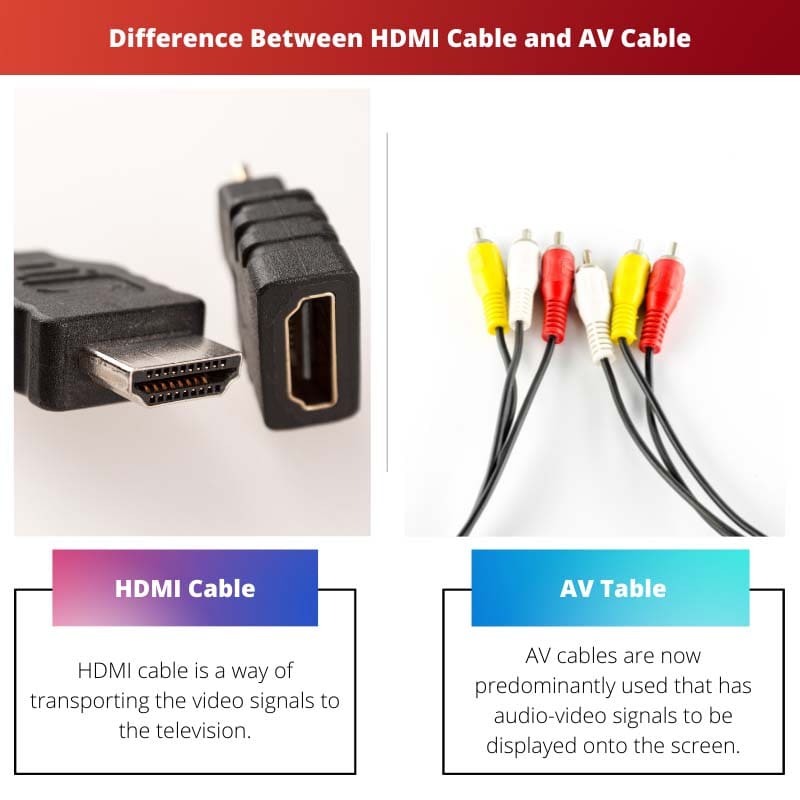HDMI Cable transmits digital audio and video signals, offering higher quality and clarity compared to AV cables, which transmit analog signals. HDMI supports higher resolutions, including HD and 4K, while AV cables are limited to standard definition. Additionally, HDMI simplifies connections with a single cable for both audio and video, reducing clutter compared to the multiple cables required by AV connections.
Key Takeaways
- HDMI cable transmits digital signals and can carry high-quality video and audio signals.
- AV cable, on the other hand, is an analog cable that transmits analog signals and does not support high-definition video and audio.
- HDMI cable provides a better overall viewing experience due to its ability to transmit high-quality digital signals with less interference.
HDMI Cable vs AV Cable
The difference between an HDMI cable and an AV cable is that an HDMI cable is meant to support the digital signal, while an av cable supports an analogue one. They both have great importance in maintaining the television’s signal quality, strength and robust nature. Also, HDMI cables are less susceptible to noise, while AV is more susceptible.

The HDMI cable, or high-definition multimedia interface cable, is a type of wired connection that provides the data onto the screen. It’s responsible for transmitting uncompressed video information and digital audio, either compressed or uncompressed, from an HDMI-compliant source device, like referring to a display controller.
An AV cable is an audio-video cable that accepts analogue signals and is more susceptible to noise as well. It’s responsible for sending the audio-video signals to the television. It works in electricity and has an electrical connector as well.
Comparison Table
| Feature | HDMI Cable | AV Cable |
|---|---|---|
| Connection Type | Digital | Analog |
| Signal Transmission | Audio and video (single cable) | Audio and video (separate cables) |
| Supported Resolutions | Up to 8K @ 60Hz | Up to 1080p |
| Audio Quality | Supports multi-channel surround sound (Dolby Atmos, DTS:X) | Stereo audio |
| Additional Features | Ethernet connectivity (optional), HDMI-CEC for device control | None |
| Cable Length | Longer lengths supported with minimal signal degradation | Shorter lengths recommended for optimal quality |
| Cost | Generally more expensive | Generally less expensive |
| Compatibility | Modern TVs, projectors, game consoles, Blu-ray players | Older TVs, projectors, DVD players |
| Benefits | High-definition picture and audio quality, single cable convenience, future-proof | Affordable, widely compatible with older devices |
| Drawbacks | May require specific HDMI version for certain features, can be more expensive | Lower video and audio quality, multiple cables required |
What is HDMI Cable?
HDMI (High-Definition Multimedia Interface) Cable is a standardized audio and video interface widely used for transmitting digital data between electronic devices. It was introduced to provide a single, streamlined connection for both audio and video signals, eliminating the need for multiple cables.
Features and Specifications
- Digital Transmission: HDMI transmits signals in a purely digital format, ensuring high-quality audio and video reproduction without the interference associated with analog signals.
- High Resolution: HDMI supports a range of resolutions, including standard definition (SD), high definition (HD), and ultra-high definition (4K and beyond). This makes it suitable for various devices, from TVs and gaming consoles to computers.
- Audio Support: In addition to video, HDMI carries audio signals, allowing for a simplified setup with a single cable for both visual and auditory data. This is particularly beneficial for home theater systems and multimedia applications.
- Multi-Channel Audio: HDMI supports multi-channel audio formats, including Dolby TrueHD and DTS-HD Master Audio, providing an immersive audio experience for home entertainment systems.
- Consumer Electronics Control (CEC): HDMI incorporates CEC, allowing interconnected devices to control each other through a single remote control. This simplifies the user experience and enhances convenience.
- Compatibility: HDMI is widely adopted across various consumer electronics, including TVs, monitors, Blu-ray players, gaming consoles, and audio-video receivers. It has become a standard interface for connecting modern multimedia devices.
- Versions: HDMI specifications evolve over time, with newer versions introducing enhanced features such as increased bandwidth for higher resolutions, support for additional color spaces, and improved audio capabilities.

What is AV Cable?
An Audio-Visual (AV) Cable, short for Audio-Visual Connection Cable, is a generic term encompassing various analog cables designed to transmit audio and video signals between electronic devices. These cables are widely used in older audio-visual systems and are distinguishable by their composite or component nature.
Composite AV Cables
Composite AV cables amalgamate analog video signals (in the form of RCA connectors with yellow, red, and white plugs) into a single cable. The yellow plug carries the video signal, while the red and white plugs transmit audio signals for stereo sound. This type of cable is commonly used for standard-definition video connections.
Component AV Cables
Component AV cables provide a higher quality analog video signal by separating it into three channels: one for luminance (brightness) and two for chrominance (color information). These cables feature red, green, and blue connectors for video, with additional red and white connectors for audio. Component AV cables offer improved video quality compared to composite cables and support higher resolutions.
Limitations of AV Cables
Despite their historical prevalence, AV cables have limitations when compared to modern digital alternatives like HDMI. They are susceptible to signal degradation over longer cable lengths, and their analog nature can result in lower image quality, especially with higher resolution content. Additionally, AV connections require multiple cables for audio and video, contributing to cable clutter.

Main Differences Between HDMI Cable and AV Cable
- Signal Type:
- HDMI Cable: Transmits digital audio and video signals.
- AV Cable: Transmits analog audio and video signals.
- Quality and Resolution:
- HDMI Cable: Supports higher resolutions, including HD and 4K, providing superior image quality.
- AV Cable: Limited to standard definition, offering lower video quality compared to HDMI.
- Simplicity and Cable Management:
- HDMI Cable: Consolidates audio and video signals into a single cable, reducing clutter.
- AV Cable: Requires multiple cables for audio and video, contributing to cable complexity and potential clutter.
- Connection Compatibility:
- HDMI Cable: Widely used in modern devices, such as HDTVs, Blu-ray players, and gaming consoles.
- AV Cable: Commonly found in older audio-visual systems, becoming less prevalent in modern setups.
- Interference and Signal Degradation:
- HDMI Cable: Digital signals are less prone to interference and maintain quality over longer cable lengths.
- AV Cable: Analog signals may experience degradation over extended cable distances, impacting overall signal quality.




